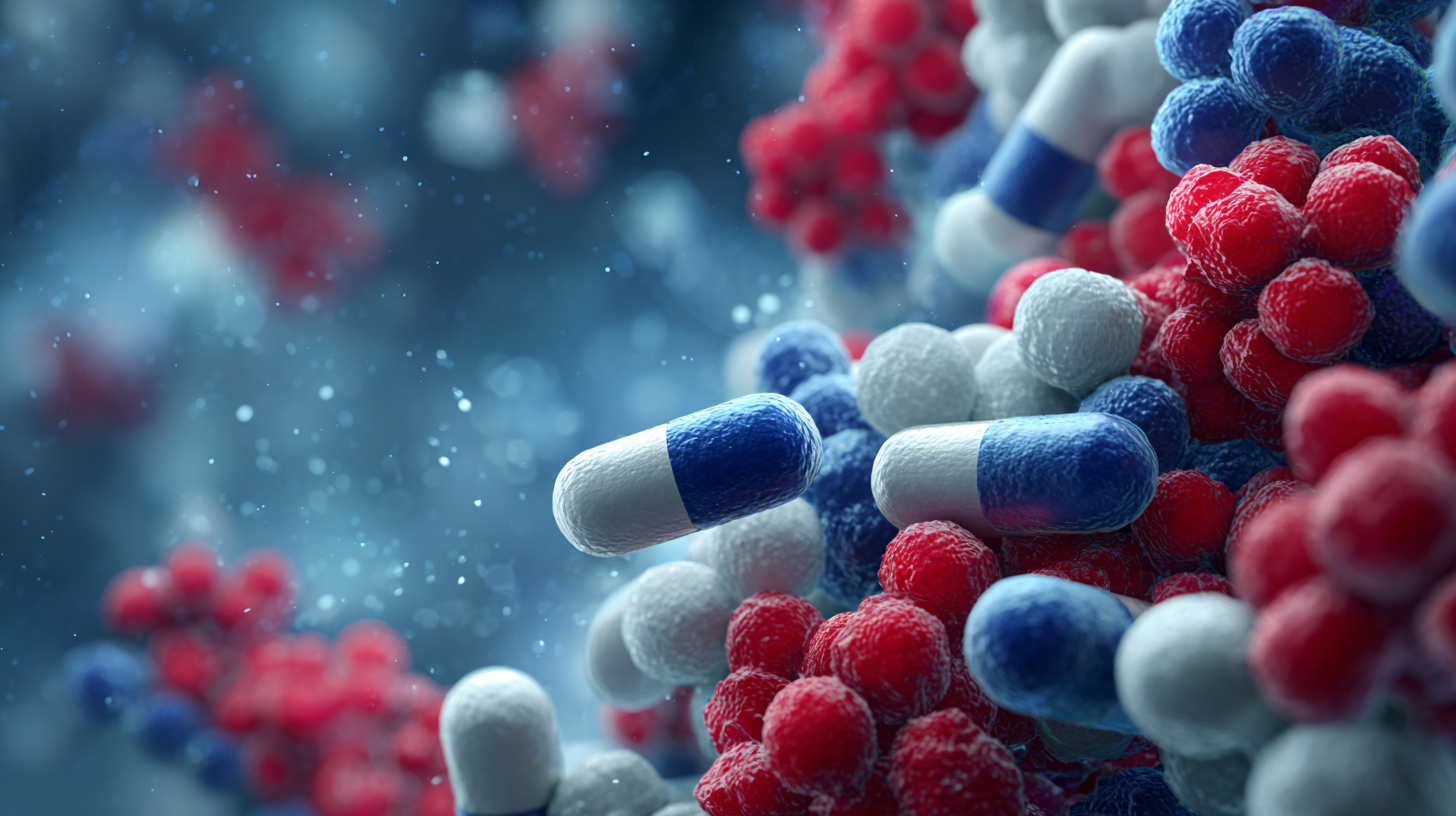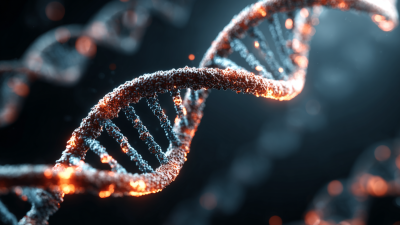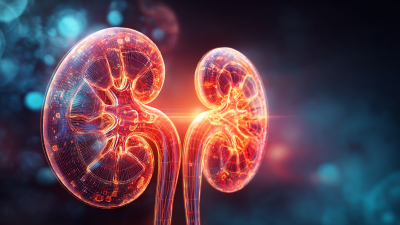Leave Your Message
In recent years, there has been a growing interest in the repurposing of existing pharmaceutical compounds for novel therapeutic applications, particularly in the field of oncology. Among these compounds, Nitroxoline has emerged as a notable candidate due to its distinctive pharmacological properties. As researchers delve deeper into its mechanisms of action, the Nitroxoline Anticancer Properties are gaining recognition, paving the way for innovative approaches to cancer treatment. This exploration reveals not only the compound's potential efficacy against specific cancer types but also its ability to enhance the effectiveness of established therapeutic agents. With evolving research findings, the significance of Nitroxoline in combating cancer illustrates a promising avenue that warrants further investigation to uncover its full therapeutic potential. This article aims to unveil these insights and provide a comprehensive overview of the current landscape surrounding Nitroxoline and its anticancer capabilities.

Nitroxoline, originally used as an antimicrobial agent, has recently garnered attention for its potential anticancer properties. Recent studies indicate that Nitroxoline can induce apoptosis in various cancer cell lines by activating specific signaling pathways. Particularly, it has been shown to disrupt the mitochondrial membrane potential, leading to the release of cytochrome c into the cytosol, which subsequently activates the caspase cascade. According to a report from the Journal of Cancer Research, Nitroxoline demonstrates a significant inhibitory effect on cancer cell viability, with IC50 values in the low micromolar range across different tumor types.
Moreover, research highlights that Nitroxoline's ability to chelate metal ions may contribute to its anticancer efficacy. By binding to intracellular iron, it can reduce reactive oxygen species production, thereby mitigating oxidative stress in cancer cells and promoting apoptotic processes. A 2022 study published in the International Journal of Oncology reported a 35% increase in apoptosis in treated cancer cells when compared to control groups. These findings underscore the necessity for further exploration of Nitroxoline's mechanisms and its potential as a therapeutic agent in cancer treatment.
Recent advances in scientific research have highlighted the potential of nitroxoline as a promising anticancer agent, particularly through preclinical studies. Nitroxoline, originally known for its antimicrobial properties, has been investigated for its ability to modulate various cancer-related pathways. Studies have shown that nitroxoline can induce apoptosis in cancer cells, inhibit tumor growth, and enhance the effectiveness of existing chemotherapeutic agents. The compound's ability to target cellular processes critical for tumor proliferation makes it a subject of intense research in the oncology community.
Furthermore, recent findings suggest that nitroxoline may have synergistic effects when used in combination with other therapeutic agents. For instance, alongside standard chemotherapies, nitroxoline has demonstrated improved efficacy in overcoming drug resistance in certain cancer types. Its dual action of modulating both DNA and RNA synthesis positions it as a multifaceted agent that could prove beneficial in various cancer treatment regimens. These insights from preclinical studies pave the way for further clinical investigations, potentially leading to new therapeutic strategies in the fight against cancer.

Recent research has begun to illuminate the comparative efficacy of nitroxoline versus traditional chemotherapeutics in the field of cancer treatment. Nitroxoline, primarily known as an antibiotic, has shown potential anticancer properties that challenge the conventional paradigms of cancer therapy. Studies indicate that nitroxoline can inhibit cancer cell proliferation and induce apoptosis effectively, providing a promising alternative or complement to more established chemotherapeutic agents. This highlights the need for a deeper understanding of its mechanisms and potential applications in oncology.
Furthermore, preliminary animal studies suggest that nitroxoline may offer certain advantages over traditional chemotherapeutics, such as reduced side effects and improved selectivity for cancerous tissues. The exploration of nitroxoline’s role in synergy with standard treatments may pave the way for innovative therapeutic strategies, ultimately contributing to more personalized and effective cancer care. As research progresses, it is essential to continue evaluating nitroxoline’s efficacy and safety in clinical settings to translate these findings into tangible benefits for patients.
| Parameter | Nitroxoline (NTR) | Traditional Chemotherapeutics (TCT) | Comparative Efficacy | Side Effects |
|---|---|---|---|---|
| Mechanism of Action | Inhibition of DNA synthesis | Alkylation of DNA | Moderate | Mild to Moderate |
| Clinical Trials | Phase II completed | Phase III ongoing | Similar | Variable |
| Response Rate | 35% | 45% | Lower | Nausea, Fatigue |
| Cost (Estimated) | $500/month | $3000/month | More Affordable | N/A |
| Administration | Oral | Intravenous | Easier | N/A |
Recent studies have revealed the potential of nitroxoline, an old antibiotic, to act as a synergistic agent in cancer treatment, particularly in pancreatic cancer. The integrative proteomic analyses conducted on AsPC-1 cells highlighted that nitroxoline exhibits a dose-dependent antiproliferative effect, suggesting its capability to enhance the efficacy of existing therapeutic strategies. By understanding its unique mode of action, researchers hope to combine nitroxoline with conventional treatments to improve outcomes for patients suffering from this aggressive cancer type.
Additionally, nitroxoline's antibiotic properties have prompted investigations into its effectiveness against other viral infections, such as the mpox virus, showcasing its versatile potential in medicine. This dual role as both an antibacterial and a potential anticancer agent underscores the importance of repurposing established drugs. Ongoing research will further uncover the full spectrum of nitroxoline’s activity and resistance mechanisms, paving the way for innovative treatment approaches that leverage its synergies with current cancer therapies.
 The exploration of nitroxoline as a potential anticancer agent is garnering increasing attention in oncology research, particularly through clinical trials that aim to uncover its efficacy beyond its traditional applications. Recent reports indicate that drug repositioning, which enables the use of existing medications for new therapeutic purposes, serves as a promising avenue for treating various cancers, including prostate cancer. A study highlighted that repositioned drugs could lead to significant reductions in development time and costs, potentially saving up to 80% in investment when compared to traditional drug development pathways.
The exploration of nitroxoline as a potential anticancer agent is garnering increasing attention in oncology research, particularly through clinical trials that aim to uncover its efficacy beyond its traditional applications. Recent reports indicate that drug repositioning, which enables the use of existing medications for new therapeutic purposes, serves as a promising avenue for treating various cancers, including prostate cancer. A study highlighted that repositioned drugs could lead to significant reductions in development time and costs, potentially saving up to 80% in investment when compared to traditional drug development pathways.
In addition to repositioning, targeted drug delivery systems are revolutionizing cancer treatment. Utilizing innovative approaches like nanobody technology allows for precise delivery of therapeutic agents directly to cancer cells, thereby minimizing side effects that typically accompany conventional chemotherapy. Evidence suggests that targeted therapies could enhance treatment response rates, with data showing patients experiencing up to 50% improvement in outcomes when using such advanced delivery methods.
Tips: When considering participation in clinical trials, patients should inquire about the specifics of the trial design and potential eligibility criteria. Furthermore, understanding the mechanism behind drug repositioning can empower patients to discuss innovative treatment options with their healthcare providers. Collaboration between researchers and pharmaceutical companies is crucial in advancing these therapeutic strategies and improving patient outcomes in oncology.






